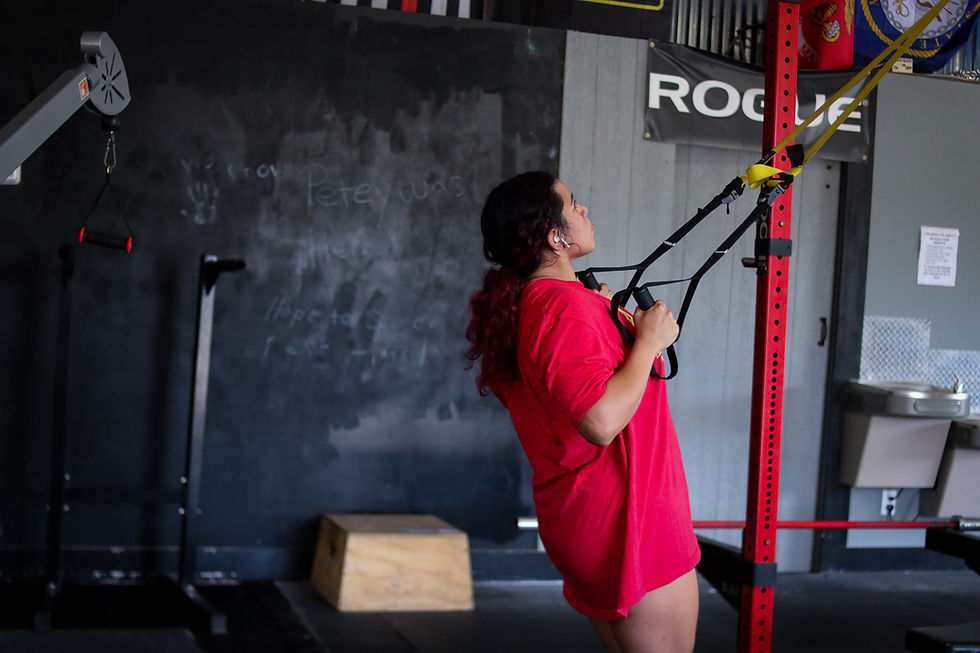As the tide turns to February, I am reminded once again of the triumph and heartache which will unfold in the next few weeks across the country. As sectional, regional, and state championships for the high school wrestling season take place and winners advance and losers end their seasons, many will start to make plans for the off-season to level up their game for the future seasons.

After five years serving as the Strength and Conditioning Coordinator for a local high school wrestling team, I wanted to take the time and share where focuses can be better aligned and distributed around the off-season. Especially when there's great potential to better reduce injury, and tackle the first half of the season with ease.

The first few weeks out of wrestling season, I'll admit should be taken easy. The goal isn't to go straight into hardcore training and club practices or freestyle tournaments. The body takes a beating during season, and understanding how it needs some rest is crucial. The first thing to consider is nutrition, and utilizing it in a way which ultimately leads to gaining muscle and minimizing fat gain initially. We call this "Reverse Dieting," where we slowly add in more calories each week. The trend many wrestlers take is binging and going overboard. But if we ease into a higher calorie intake we can keep some of our leanness we built up during season.
March-May

The first 8-12 weeks, we want to take the time to build mass. We're going to isolate joints and muscle tissues to build more muscle mass and make any changes in weight class. With the increased calorie intake from season, this will actually happen pretty quickly. During this time we'll repattern and learn new skills to transfer to compound movements. Especially as injuries and tweaks happen throughout a season, movements may start to develop compensation patterns which can cause issues down the line. We want to address movement patterns while lightly loaded, and drive output on isolation work. We also want to keep our aerobic base from the season with some Zone 2 Conditioning work (65-70% of a heart rate max) with 40-60minutes of low impact conditioning each week. Note, we want to steer clear of running and sprints to let the knees and hips recover after the beating they take during season.
June-July

This is where we start to work on increasing maximum strength, and introducing more compound movements. This is where we try to increase the total amount of force the muscle can produce. This should also be done both bilaterally and unilaterally. Wrestling is a unique sport in how it changes dynamics and movement patterns based on the style of each wrestler within a match. We want to spend time increasing max strength. From a core strength perspective, we also want to maximize the amount of anti-rotational strength we have for later rotational training to be done. For conditioning work, incorporating a few higher intensity days through low impact intervals or circuits can be great. Extensive tempos, or tempos done in the range of 75-80% of a max heart rate at 3-5 minutes per bout can be a great tool.
August-October

This is the transition to season and performance preparation. This is where we start focusing on developing power and speed. Especially in a wide varying manner. Wrestlers need power in each plane, so doing linear power movements like sprints, jumps, and bounds are key. Being able to produce rotational power through landmine punches, jerks, and rotational medball tosses are also crucial. Building power on a single leg and arm is also crucial. From a conditioning perspective, we want to have a variety of Zone 2 Conditioning (steady state), Extensive tempos, and then Intensive Tempos (short bursts with heart rates exceeding 80% of a heart rate max). We also want to begin dieting back down slowly over time. Personally, I find two week phases of slowly decreasing calories is a good way to get close to the desired weight class by the time hydration testing comes around.
Now note, this is just a rough outline for training which has been developed through trial and error over the last five years. There's a lot to consider with each phase of training and how it all comes to play during each, but as an outline this can help guide decisions in the weight-room for training. But if you stick to this rough template, you'll be able to set yourself up for success on the mat next season.

Looking for some extra guidance throughout the off-season? Check out Strong Future Wrestling, a complete off-season training program filled with a community of other wrestlers pursuing excellence next season. With monthly Zoom calls, a program delivered straight to your phone, and the ability to get feedback and guidance in the gym, this off-season can be the best one yet in preparation for next season.

Comments